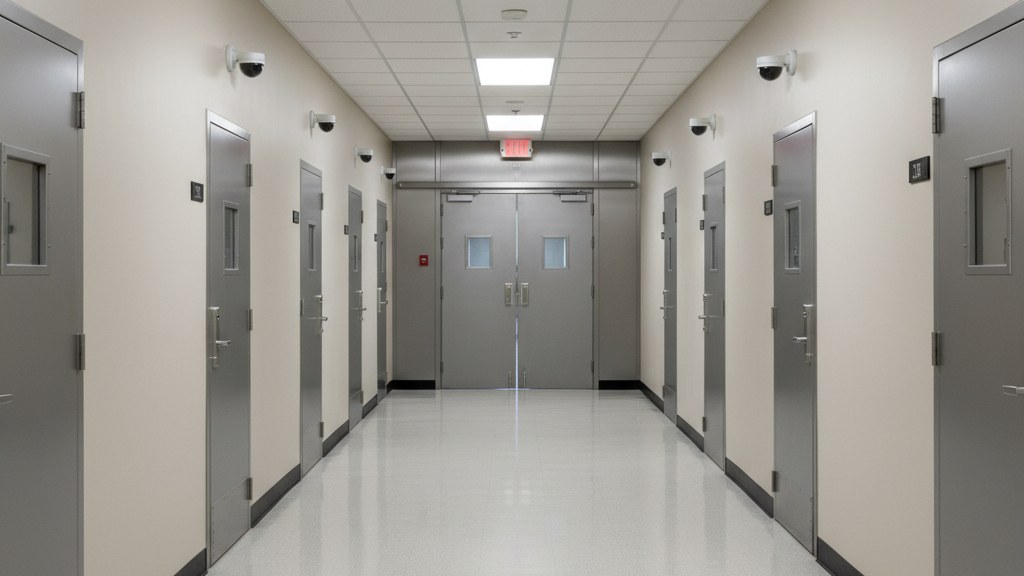
Understanding juvenile crimes and offenses is crucial for stakeholders in the justice system, as it reveals underlying trends and challenges. This overview examines the shifting dynamics of juvenile crime rates, the types of offenses commonly committed by minors, and how the justice system responds to these young offenders. By exploring these aspects, we aim to shed light on effective interventions and policies that can better address the unique needs of juveniles, reducing recidivism and promoting rehabilitation. This insight can significantly aid legal practitioners, policymakers, and communities in fostering an environment conducive to positive youth development.
Brief Overview
Understanding juvenile crime trends and justice system intricacies is crucial for addressing the challenges faced by young offenders. Recent shifts reveal increasing juvenile offenses, emphasizing the need for effective legal and rehabilitative strategies. Contributing factors include socioeconomic conditions, family dynamics, and psychological influences, which shape behavioral patterns among youth. The juvenile justice system aims to balance legal repercussions with rehabilitation, focusing on tailored interventions that recognize the potential for reform. At The Law Office of Jesse Sanchez, we advocate for young individuals, emphasizing informed decisions and supportive environments to promote their rehabilitation and positive societal contributions.
Key Highlights
- Juvenile crime trends reveal a rise in offenses driven by economic, social, and psychological factors.
- Socioeconomic conditions and family dynamics significantly contribute to juvenile delinquency.
- Violent crimes among juveniles are increasing, highlighting issues in the justice system.
- Psychological influences and environmental factors shape juvenile criminal behavior.
- The juvenile justice system faces challenges in ensuring fair, rehabilitative outcomes for youth.
The Rise of Juvenile Crimes in Modern Society
In contemporary society, the rise of juvenile crimes poses significant challenges to the justice system. As we explore juvenile crime trends, it becomes apparent that multiple factors drive youth offending, encompassing economic, social, and psychological elements. Statistical analyses reveal changes and patterns in juvenile offending, which demand attention from policymakers, law enforcement agencies, and communities. Understanding these trends is crucial for devising effective programs and interventions to curb offenses among juveniles. Identifying the root causes of juvenile delinquency and scrutinizing statistical trends is essential for creating informed strategies to support at-risk youth and reduce crime rates.
Factors Contributing to Juvenile Delinquency
Several interconnected factors contribute to juvenile delinquency, ranging from socioeconomic conditions to family dynamics. Economic disparities often leave juveniles vulnerable to crime, while unstable home environments can lead to negative behavioral patterns. Peer pressure also significantly influences youth offending, as adolescents seek acceptance in delinquent circles. Educational challenges, including school dropout rates and low academic engagement, correlate with higher instances of juvenile crimes. Moreover, exposure to violence at a young age can desensitize juveniles, increasing their likelihood of becoming offenders. Programs aimed at addressing these root causes require holistic approaches, combining community support, education, and parental involvement. The role of state and local governments is critical in providing resources and opportunities to deter juveniles from the path of crime. Efforts such as delinquency prosecution and programs that focus on rehabilitation rather than punishment can make a substantial difference in mitigating juvenile delinquency. To build upon the previous discussion on the factors contributing to juvenile delinquency, it's crucial to consider effective strategies and interventions that can help mitigate this issue:
- Implementing early intervention programs that target at-risk youth to prevent delinquency before it starts.
- Enhancing family support services to foster stronger family dynamics and reduce negative influences.
- Increasing access to quality education and extracurricular activities that engage young people in positive ways.
- Fostering community-based initiatives that provide mentorship and role models for young individuals.
- Promoting restorative justice approaches that focus on rehabilitation rather than punishment. By integrating these strategies, communities can work collectively towards reducing juvenile delinquency and supporting the positive development of young people.
Statistical Trends in Juvenile Offending
Analyzing statistical trends in juvenile offending is pivotal in understanding the scope and nature of crimes committed by juveniles. Recent statistics suggest a nuanced shift in the types of offenses, with a notable increase in violent crimes, including murder, among youth. While the overall number of juvenile cases might fluctuate, the severity of the offenses often commands significant attention. A rise in status offenses, such as truancy and underage drinking, points to underlying issues in the juvenile justice system that require addressing. Juvenile court filings reflect these trends, highlighting the complexities involved in prosecuting juveniles. The state's response to these statistics influences how justice is administered and what reforms are necessary for preventing recidivism. Effective juvenile justice programs and crime prevention initiatives are built on interpreting statistics correctly and implementing data-driven policies. Ultimately, focusing on supportive measures within the justice system can pave the way for rehabilitation and reintegration of juveniles into society, ensuring that youth offending doesn't define an individual's future.
Understanding Juvenile Criminal Behavior
Juvenile criminal behavior often stems from complex psychological and social factors, which can manifest as youth offending within communities. By probing into the psychology of juvenile crime, we gain insights into why juveniles might engage in criminal activities and how behavioral trends develop over time. These insights are crucial for adapting our legal and intervention strategies, reflecting the needs of juvenile criminals and society. Influencing these strategies are factors like systemic issues and child-centric interventions. Understanding juvenile behavior helps shape a justice system that nurtures rehabilitation while mitigating the drivers of crime.
The Psychology Behind Juvenile Crime
The psychology of juvenile criminal behavior delves into deep-rooted influences that lead juveniles down the path of crime. Many juveniles who find themselves entangled in criminal offenses exhibit psychological patterns shaped significantly by their environment. A child's early social experiences, combined with familial dynamics, contribute to behavioral disorders that often manifest as youth offending. The intersection of personal and psychological stress factors, such as exposure to violence or neglect, can profoundly influence a juvenile's propensity toward criminal behavior. Adolescence represents a critical transitional phase, where identity and decision-making skills are still forming, making youths particularly susceptible to negative influences. Psychological research suggests that impulsivity, a desire for acceptance, and a lack of foresight are common among juvenile criminals, partly explaining repetitive juvenile crime patterns. Understanding these psychological components provides a framework for tailored interventions that aim to redirect juveniles away from crime. By emphasizing behavior modification and psychological support, the justice system can better address the needs of young offenders. Additionally, statistical analyses reinforce the importance of these psychological factors in forecasting juvenile crime trends. Emphasizing rehabilitation over retribution in legal contexts can aid in breaking the cycle of crime, offering juveniles a chance to develop skills that promote positive societal contributions.

The Role of the Juvenile Justice System
The juvenile justice system plays a crucial role in handling offenses committed by minors, addressing both legal repercussions and rehabilitation. As juvenile crime trends evolve, the system must adapt to better serve justice and societal needs. This involves understanding the unique challenges faced by juveniles in the court system and how these can affect the outcomes of their cases. Navigating the complexities of juvenile court, with an emphasis on creating supportive structures, helps in redirecting youths from a path of crime towards rehabilitation and positive community reintegration.
Challenges Faced by Juveniles in the System
The juvenile justice system is fraught with challenges that disproportionately affect young offenders seeking a chance at reform. One of the primary hurdles is the complex nature of the juvenile court, which often intimidates youths. This complexity can lead to misunderstandings about their rights and the proceedings they face. Many juveniles enter the court system with little knowledge of how the system functions, which can hinder their ability to advocate for themselves effectively. Moreover, court-appointed legal representation sometimes faces constraints of time and resources, limiting the effectiveness of client advocacy. Beyond the procedural complexities, there's the stratification within the system itself. The disparity in how different states handle juvenile cases can result in varying degrees of fairness, leading to inconsistent outcomes for similar offenses. This state-by-state variation can stem from legislative differences, resource availability, and public attitudes towards juvenile crime, complicating the system's efforts to administer uniform justice. Juveniles are also challenged by systemic biases that may skew towards harsher sentencing for certain demographics. Factors such as race, economic background, and prior interactions with law enforcement can influence the outcome of cases. These biases indicate a crucial need for reforms within the juvenile justice system aimed at ensuring equitable treatment for all youths. Addressing these multifaceted challenges involves sustained efforts towards education, legislative reform, and community support systems that prioritize rehabilitation over punishment.
Legal Perspectives on Juvenile Offenses
Exploring the legal perspectives on juvenile offenses is pivotal for understanding how laws, the court system, and justice initiatives influence youth outcomes. Legal frameworks not only define how juvenile cases are prosecuted but also how rehabilitation programs are developed within the juvenile justice system. Examining how juvenile laws shape these processes helps address the complex dynamics at work in juvenile court and the broader justice system. This section delves into how legal perspectives guide the management of juvenile offenses, shaping not only outcomes for young offenders but also future crime trends.
How Law Shapes Juvenile Justice
The role of law in juvenile justice cannot be overstated, as it sets the parameters within which juvenile offenses are processed and adjudicated. Legal perspectives on juvenile law have evolved, reflecting shifts in societal attitudes toward juvenile crime and rehabilitation. Courts play a crucial role in interpreting juvenile laws, with judges tasked with balancing societal protection and rehabilitation needs. Legal frameworks dictate how juvenile cases are handled, which can significantly influence justice outcomes. For instance, larceny involving juveniles is often treated differently from adult theft cases, recognizing the developmental differences and potential for reform in young offenders. Court systems prioritize supportive measures, emphasizing rehabilitation over punishment through diversion programs. These programs aim to steer juveniles away from a life of crime and toward constructive societal contributions. The justice system's approach is constantly reevaluated to incorporate new insights into juvenile psychology and statistical crime trends. Thus, law not only defines the justice system's structure but also adapts to new challenges and opportunities for effective juvenile crime intervention.
Understanding juvenile crime trends and the nuances of the juvenile justice system is essential for fostering an environment where youth can be rehabilitated and redirected toward positive futures. At The Law Office of Jesse Sanchez, we are committed to advocating for the rights and best interests of young individuals within this complex system. We strive to provide compassionate and strategic guidance tailored to each unique case. This journey requires informed decisions and supportive networks, emphasizing that every juvenile deserves the opportunity for correction and growth toward a better future.
FAQs
What factors contribute to juvenile delinquency?
Juvenile delinquency is influenced by various factors, including socioeconomic conditions, family dynamics, peer pressure, educational challenges, and exposure to violence. Addressing these factors requires comprehensive support, such as educational programs and community interventions.
How is the juvenile justice system different from adult courts?
The juvenile justice system focuses on balancing legal consequences with rehabilitation, often emphasizing individualized interventions and recognizing the potential for reform in young offenders, unlike adult courts, which primarily focus on punishment.
What are the recent trends in juvenile crime rates?
Recent trends indicate a rise in certain juvenile offenses, particularly violent crimes, influenced by complex socioeconomic, psychological, and environmental factors. Understanding these trends is crucial for implementing effective intervention strategies.
Why is rehabilitation emphasized in juvenile justice?
Rehabilitation is emphasized because it offers juveniles the opportunity to reform and reintegrate into society, reducing recidivism. By focusing on psychological and behavioral interventions, the system supports long-term positive development.
How can The Law Office of Jesse Sanchez support juveniles in the justice system?
At The Law Office of Jesse Sanchez, we advocate for young individuals, providing legal guidance that emphasizes informed decision-making and support to promote rehabilitation and positive societal contributions for juveniles.



